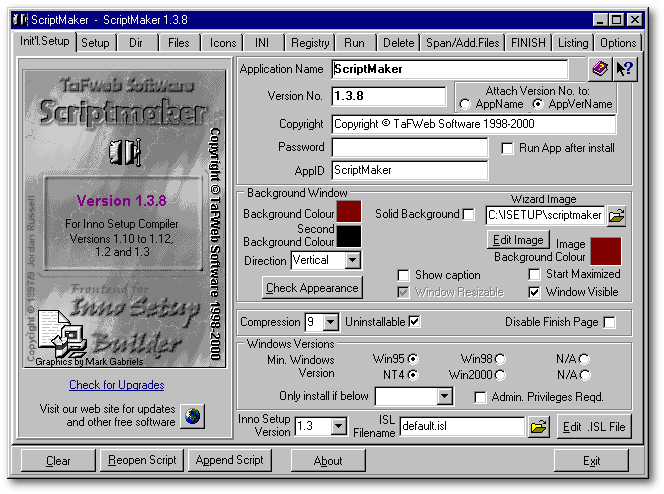Delete File After Install Inno Setup Registry
There are two optional that are supported by all sections whose entries are separated into parameters except for [Languages], [Types], [Components] and [Tasks]. These are: The name of a function that is to be called once just before an entry is installed. The function must either be a custom function in the [Code] section or a. May include a comma separated list of parameters that Setup should pass to the function. Download Sketchup Pro 8 Italiano Crackle. Allowed parameter types are String, Integer and Boolean. String parameters may include constants.

Oct 9, 2016 - In this guide, I use InnoSetup to create such an installer. After the completion of the installation, we need to take charge again and start the build process of the package. We, first, check whether there is an appropriate Delphi installation before we proceed and, then, we delete any old BPL files. Note that only the registry part needs scripting, the remaining stuff (creating the setup screens, configuring how the setup works, where to install your files, what. After that, the same is done for the entries in the Addin-manager location of the registry: look if the addin-to-be-installed is present and if so, remove the Value from.
These constants will not be automatically expanded. Rgb To Ral Converter Free here. If you want to pass an expanded constant, there's one special that may be called from within a parameter list for this: ExpandConstant.
Buku Pendidikan Pancasila Pdf Files on this page. Hii Jagadeish, I tried to workout in the way mentioned above but here I didn't ubderstand the concept of creating an another component with some dummy Key and set as key path. If u dnt mind could you elaborate that. I understood that in this way- 1) change the HKCU value with the value I need in.mst 2) create a registry like 'test.reg' in that mention the key I need to change with the new value 3) Key Path >>>?? (actually didn't understand this) 4) now installthe msi with switches you mentioned over there (I got this it repairs the msi for each user who logged into the same machine). I have updated my above post long back but it is not reflecting there. Let me tell you now. 1) Update the registry with the new value in your mst 2) Create an another component named NewValue (Something like this) and add a dummy HKCU registry in that component For Example: HKCU Software Your Application Key=ProductVersion Type=REG_SZ Value=[ProductVersion] 3) Set the above registry key as KeyPath 4) Make sure you have added the above component in same feature, also that advertised shortcut is present in the same feature 5) Install the msi with following command line msiexec /i 'VendorMSI.msi' TRANSFORMS='MyUpdatedMST.mst' REINSTALL=ALL REINSTALLMODE=voums /qb.